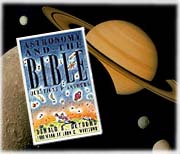Astronomy in the Bible
The Hebrews were devout students of the wonders of the starry firmanent (Amos 5:8; Psalm 19).
The stars were called “the host of heaven” (Isaiah 40:26; Jeremiah 33:22).
Astronomical observations were also necessary among the Jews in order to the fixing of the proper time for sacred ceremonies, the “new moons,” the “passover,” etc.
Many allusions are found to the display of God’s wisdom and power as seen in the starry heavens (Psalm 8; 19:1-6; Isaiah 51:6, etc.)
In the Book of Job, which is in all probability the oldest book of the Bible, the constellations are mentioned and named. Mention is made of the “morning star” (Rev. 2:28; compare Isaiah 14:12), the “seven stars” and “Pleiades,” “Orion,” “Arcturus,” the “Great Bear” (Amos 5:8; Job 9:9; 38:31), “the crooked serpent,” Draco (Job 26:13), the Dioscuri, or Gemini, “Castor and Pollux” (Acts 28:11).
The oldest divisions of time were mainly based on the observation of the movements of the heavenly bodies, the “ordinances of heaven” (Genesis 1:14-18; Job 38:33; Jeremiah 31:35; 33:25). Such observations led to the division of the year into months and the mapping out of the appearances of the stars into twelve portions, which received from the Greeks the name of the “zodiac.”
The word Mazzaroth in Job 38:32 likely means the constellations.
More information
- stars
- stargazers
- constellations
- heavens
- calendar
- seasons
- moon
- sun
- Planets:
What is Chiun? - Is the gospel spelled out in the stars? Answer
- See our large menu of astronomy questions-and-answers—GO…
-
 Excerpts from Astronomy and the Bible: Questions and Answers by Dr. Donald DeYoung
Excerpts from Astronomy and the Bible: Questions and Answers by Dr. Donald DeYoung